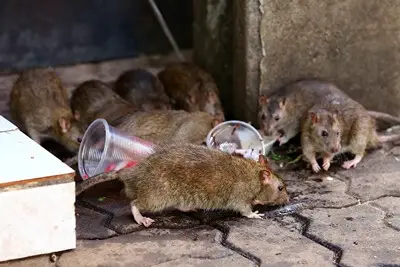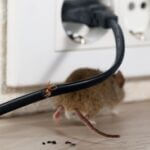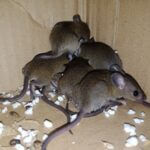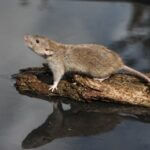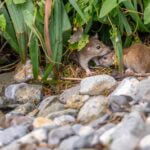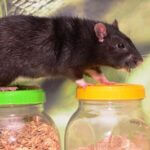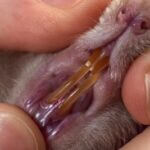Throughout history, rats have been considered filthy, disease-carrying animals. This has resulted in many people developing deep fears of rats called musophobia.
Rats are found wherever humans have settled and regularly enter people’s homes for food, water, and warm shelter. Invasive and difficult to avoid, wild rats are pests.
Fancy rats (a domesticated pet species) are beloved for their intelligence, social abilities, and appearance.
Science has improved with the assistance of rats as test subjects and research tools. In certain cultures, rats are revered as wise, clever, or even holy.
Rats have earned their reputation as fascinating, valuable creatures. However, the problems wild rats bring and the reasons they should be removed from homes are also well-founded.
Why Are Rats Hated?
Rats are pests credited with spreading diseases throughout history, such as the Black Plague, and causing severe property damage in the modern age.
According to the National Pest Management Association, rats chewing on wires may cause 20-25% of unexplained house fires.
Despite their intelligence and evolutionarily advanced bodies, rats are hated for these reasons:
Rats Are Filthy and Unhygienic
Rats aren’t clean animals, spending much of their time in unsanitary locations, like:
- Sewers
- Drains
- Dumping sites
- Garbage bins
- Unkempt yards
- Compost piles
After all, these locations provide ample feeding opportunities. In sewers, for instance, rats will feed on the waste that has been flushed down the toilet, and they are also known to feed on their fecal matter and that of other animals. So, rats in sewers have abundant organic material to feed on.
Rats are also attracted to filthy places because they provide secure shelter and nests. For example, rats might nest there if you have a dirty and unkempt shed with lots of clutter. There are many places to hide near items that can be torn apart to form nests.
Unfortunately, when rats spend time in unsanitary areas, they pick up dangerous pathogens from these locations and spread them wherever they go. Therefore, rats entering your home will likely spread them all over your property, contaminating your food and water.
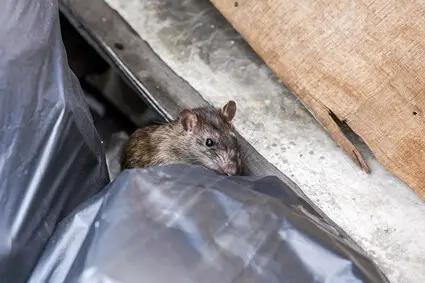
Rats Spread Deadly Diseases
Rats are believed to carry at least 60 infectious diseases, many of which are fatal to humans.
This perception of rats as disease-ridden creatures dates back to the 14th century when it was alleged that rats were the carriers of the fleas that caused the Bubonic plague (also known as the Black Death).
This disease caused the death of between 75-200 million people across Europe and Asia.
According to PNAS, new studies have attempted to debunk the belief that rats were responsible for this catastrophe. However, this has done little to change the negative perception of rats.
That’s likely because diseases that rats have been confirmed to spread are just as dangerous to humans as the infamous Bubonic plague. These include:
Leptospirosis
Leptospirosis is an infection caused by bacteria from the genus Leptospira.
According to Epidemiology and Infection, wild rats, particularly Norway or brown rats (Rattus norvegicus) and black rats (Rattus rattus), are the main carriers of the leptospira bacteria.
While rodents are asymptomatic carriers of the disease and will rarely fall sick themselves, humans can experience a wide range of symptoms when exposed to the bacteria.
Typically, the disease is transmitted to human beings via contact with the urine and feces of an infected rat. That’s in addition to consuming food or water containing the bacteria.
Hantavirus Pulmonary Syndrome
Hantavirus pulmonary infection is a viral disease spread through contact with infected rats and other rodents. Although rare, it’s characterized by intense symptoms and has a mortality rate of 38%.
Usually, symptoms manifest about 2-3 weeks from infection.
Currently, there’s no vaccine or cure for hantavirus pulmonary syndrome, so treatment is usually supportive. Patients with the illness are given broad-spectrum antibiotic drugs to alleviate the symptoms and stall the progression of the illness.
Rat-Bite Fever (RBF)
Rat-bite fever is a severe illness caused by the streptobacillus moniliformis bacteria.
As the name suggests, infected rats transmit RBF through bites and scratches. However, it can also be spread via direct contact with an infected rat’s body, urine, and droppings.
Salmonellosis
Salmonellosis is a common infection caused by salmonella bacteria. While the consumption of raw chicken typically spreads the disease, it is also spread by infected rats.
Transmission occurs through direct contact with contaminated urine or feces and consuming contaminated food or water.
Tularemia
Tularemia is a disease caused by Francisella tularensis bacteria. Although highly contagious and potentially fatal, it can be treated if diagnosed early.
There are several types of tularemia, which an individual can contract depending on how the bacteria enter the body. These include:
- Ulceroglandular tularemia
- Glandular tularemia
- Oculoglandular tularemia
- Oropharyngeal tularemia
- Pneumonic tularemia
- Typhoidal tularemia
Since there’s currently no treatment for tularemia, it’s vital to take the necessary measures to prevent infection in the first place.
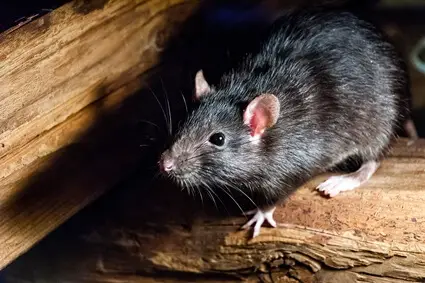
Rats Cause Serious Damage to Property
Aside from health concerns, rats also threaten homes and property.
Rats inflict severe structural damage to homes, often leading to catastrophes such as fires and house flooding.
Rats mainly damage property using their teeth, which are open-rooted and grow throughout their lives. Consequently, they must constantly gnaw on objects to trim them down and keep them from growing out of control.
Rats can also damage property by scratching their claws, but their bite force is superior. Ways in which rats cause damage to the property include:
Nest Building
Like other mammals, rats need warm shelters to protect themselves from predators and harsh weather and raise their offspring.
Since rats are intelligent and diligent creatures, they will build nests using any readily available materials in their environment.
So, they may strip down insulation and destroy clothes to use the debris as nesting material.
Electrical Damage
Rats love to chew on electrical cords and wires. Their rounded shapes make them easy to hold when chewing, and a rat’s hard teeth can tear through any coating and the metal wires beneath.
By chewing electrical cables, rats can expose live wires. This increases the risk of electrocution and can lead to electrical fires, which can destroy homes and cause fatalities among occupants.
Food Damage
Rats are often attracted to homes by the prospect of food, including compromised canned food. Once a meal is located, rats gnaw and claw through poorly-stored containers to reach the food.
In the process, they’ll contaminate it with their filthy bodies, urine, and poop. This can force you to throw out any food they’ve touched and any items suspected of having been touched.

